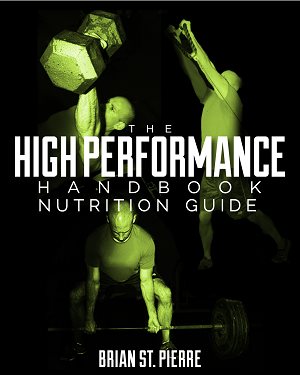Christmas Trees and The Truth about Salt
Filed under: General Health, Nutrition
First off today I wanted to mention that my wife and I went with my parents and sisters to pick up our very first Christmas tree together. Though my parents’ tree is about twice as tall and probably four times as heavy, we are still proud of our little 7 footer. We will do a little decorating around the house today and be good to go.
While at my parents’ house yesterday I picked up my dad’s old Men’s Health magazines because you can almost always find some interesting tidbits and articles in there. Sometimes they are excellent, sometimes not so much, but it is far and away the most consistently good fitness magazine out there.
While perusing through the November issue I came across two interesting things:
1. EC gave a nice little dynamic warmup sample for the magazine. It was his favorite combination of moves that apparently he now calls “the Microwave?” I chuckled a little at that, as it was news to me, but the warmup is top-notch. It is simply a walking high-knee hug to a walking spiderman with an overhead reach and hip lift. You can get these moves and many others in EC’s Assess & Correct.

2. There was also an interesting article entitled “The Truth about Salt” by Maria Masters.
When I attended “The Great Fat Debate” at the Food and Nutrition Conference and Expo in Boston earlier this month there was certainly a lot of interesting information put forth by the speakers. Some of it, mainly the stuff by Dr. Lewis Kuller, was awful. He was stuck in 1975 and definitively stated that the only concern should be LDL and apoB and nothing else. He was an arrogant fool who did not provide any information that was newer than 1980.
Sorry, I just had to get that off my chest. For any of you who attended or streamed the “debate” (there was no debate, simply four 15-minute talks with a small q & a at the end) I just wanted to put that out there. The study of the causes of heart diseases finally seems to be making some leaps forward, so it is imperative that we don’t listen to people like Dr. Kuller who prefer to retain the status quo simply because discovering new information may discredit what they have been teaching, and that is just unacceptable. For people like him it is easier to just be in denial.
Anyway, in that debate the best speaker, Dr. Dariush Mozaffarian, gave the most clear-headed and accurate representation of the research and the facts. He declared the focus on total fat and saturated fat to be non-sense. The research just does not bear it out. Though he was a fan of increasing polyunsaturated fats to reduce risk of heart disease, which I disagree with to a point, he was also a fan of reducing sodium intake.
He felt the only information that should be on Nutrition Facts labels should be total calories and sodium content. That’s it. While maybe a little extreme, I understood his point. Which brings me to this Men’s Health article.
“More than 20 percent of American men between 35 and 44 have high blood pressure.” That is a scary statistic and because of it the American Heart Association, Institute of Medicine as well as New York City and 30 others are trying to decrease the salt intake of America. So should you stop adding salt and pepper to your eggs and other meals?
Maybe not. 77% of our sodium intake comes from pre-packaged processed foods and restaurant meals. 77%. Another 12% naturally occurs in food and only 5% comes from home cooking. Still think that little dash of salt in your stir-fry is really the problem? Me neither.
Salt is an essential mineral needed to maintain muscle function and hydration. The Institute of Medicine recommends a little bit over 1/2 tsp of salt per day to help maintain electrolyte balance. What people often do not realize is it is the balance between sodium and potassium that is the real key, not just sodium intake alone.
The body is constantly balancing the sodium to potassium ratio, and it has been shown that an increase in potassium intake can lower blood pressure just as well as a decrease in sodium intake. Unfortunately the vast majority of Americans fall well short of their potassium needs, as well as their needs for the best source of potassium – fruits and vegetables. 1 medium potato contains 25% of your daily potassium needs.
Know what else causes high blood pressure? Being overweight.
To me the real keys to lowering your blood pressure are this:
- Maintain a healthy bodyweight
- Eat mostly real, whole minimally processed home-cooked foods and meals
- Consume lots of fruits and vegetables, ~5-10+ servings per day
- Exercise regularly
That’s it. If you do all of these things and you still have high blood pressure, then you may have some other complications going on and you should talk to your doctor. I am also of the belief that the quality of your salt might have an impact as well, since highly processed conventional salts are sodium chloride and nothing else. More traditional salts like Redmond Real Salt still have a color (pink in this case), have a better flavor profile and contain a bunch of trace minerals, including iodine.


Check out the BSP Training & Nutrition Newsletter!
You will get immediate access to:
- Weekly updates and exclusive content.
- The 20-page report "The Truth About Saturated Fat & Cholesterol."
- Become more awesome!
Posted on November 29th, 2010 by Brian St. Pierre
2 Comments




November 30th, 2010 at 9:15 pm
I thought regular iodized salt had more iodine than natural sea salt?
December 2nd, 2010 at 9:04 am
Josh,
Yes iodized salt does have more, but high quality sea salt like Redmond Real Salt naturally contains iodine. I was simply pointing that out because the only reason “regular” salt doesn’t contain iodine is because it is removed in the processing.